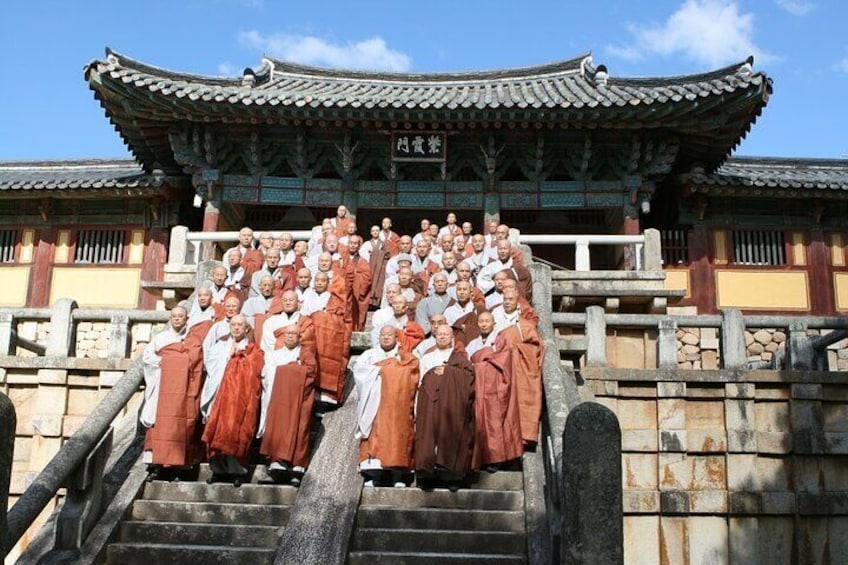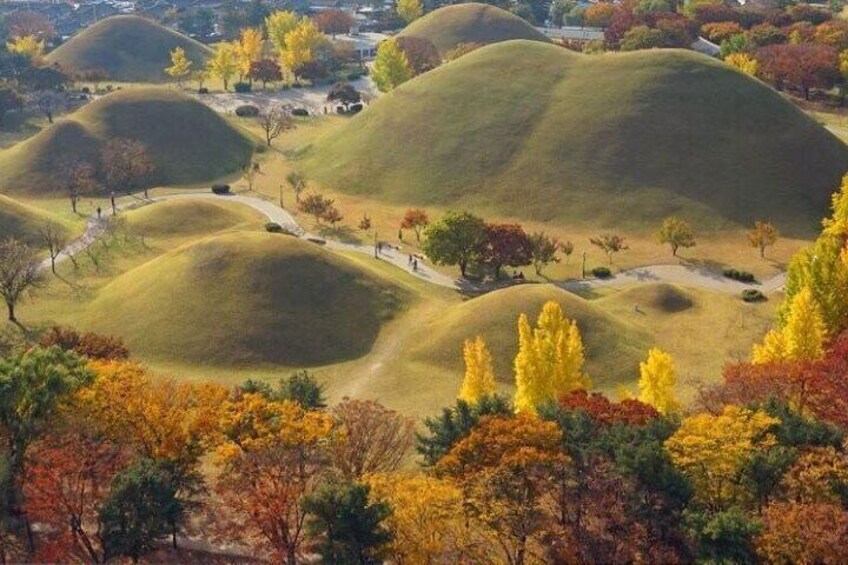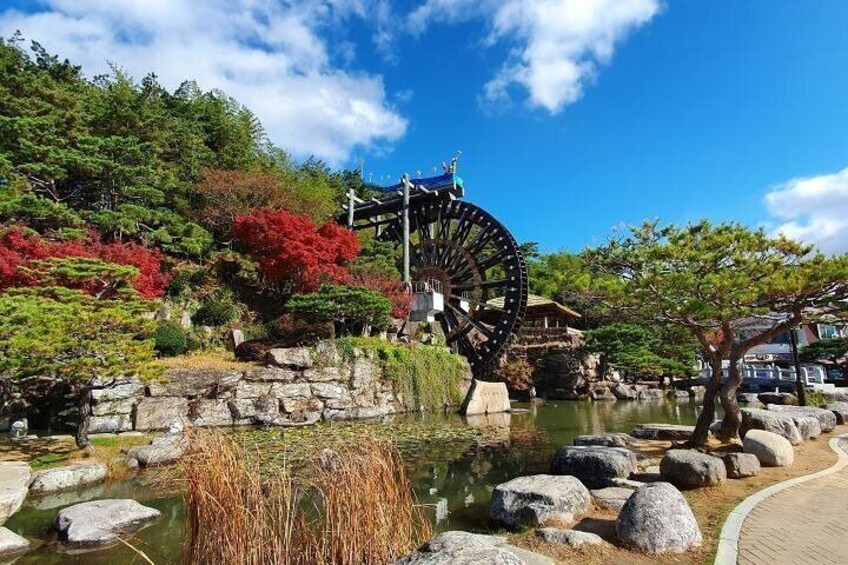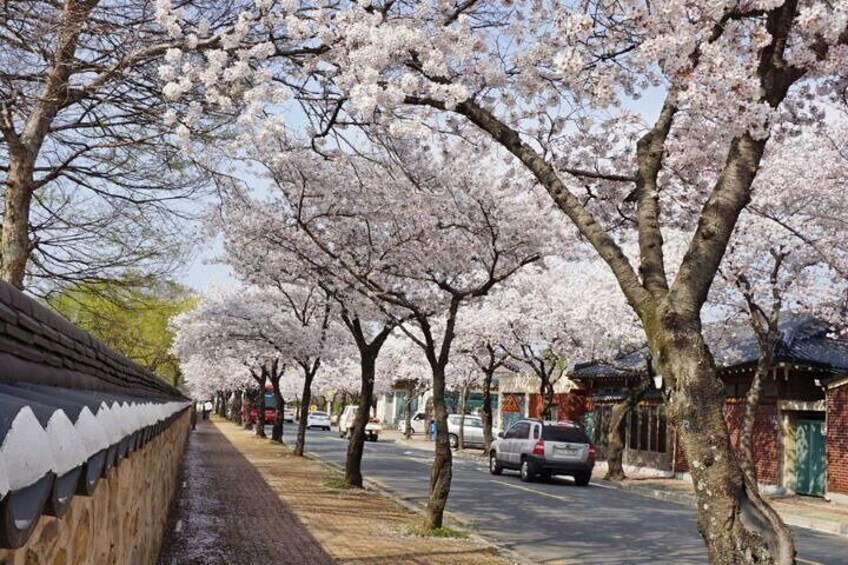Members save 10% or more on over 100,000 hotels worldwide when you’re signed in





2-Days Gyeongju Customised tour
Features
- Free cancellation available
- 2d
- Mobile voucher
- Instant confirmation
- Selective hotel pickup
- Multiple languages
Overview
Gyeongju, with a thousand-year history, is the capital of the Silla Kingdom. The whole of Gyeongju is a museum without walls, and it is a place where you can understand ancient Korean traditions, Buddhist culture, and Confucian culture. The Kingdom of Silla, with its splendid Buddhist culture and lives and extensive exchanges with China, Japan, and the Middle East, is of Korean important history and is famous as an educational centre for many Koreans and a tourist destination visited by foreigners, they want to know about Korean history and culture. I will recommend your customised itinerary to know the history and enjoy local foodies for 2 days.
- Recommend itinerary
Day 1 Seokgulam-Bulguksa-Folk Craft Village-Daereungwon Tomb Complex-Gyochon Village-Cheomseongdae Observatory-National Museum-Wolji Pond
Day 2 Mt. Namsan museum trail 4-6 hours or Yangdong Folk Village- Oksanseowon-Golgulsa Temple-Tomb of King Munmu-Gampo Port-Columnar Jointing Observation-Eubcheonhang
Activity location
- Seokguram
- 999 Jinhyeon-dong,
- 780-400, Gyeongju, Gyeongsangbuk-do, South Korea
Meeting/Redemption Point
- Seokguram
- 999 Jinhyeon-dong,
- 780-400, Gyeongju, Gyeongsangbuk-do, South Korea
Check availability
Korean driver without Guide in Multilingual
- 2d
- Opening hours: Thu 8:30-9:30
- English
Saloon, Mini Van, Mini Bus: Small, Large Group with a Korean driver (Simple English)
Pickup included
With Guide (1-7pax) in Multilingual
- 2d
- Opening hours: Thu 9:00-11:30
- English
Saloon, Mini Van: Small-Group with Guide or driving guide
Pickup included
With Guide (8-15pax) in Multilingual
- 2d
- Opening hours: Thu 9:00-11:30
- English
Large Van, Mini Bus: Large-Group with Guide or driving guide
Pickup included
What's included, what's not
- Private transport
- Busan, Gyeongju free transport service after the tour
- Free pickup and drop-off
- Guide + driver or driving guide
- Gas + toll + parking fees
- Hotel and accommodation
- Meals + Admission fees are not included ( pay at the sport )
- Seokgulam Grotto W 5,000/per Bulguksa temple W 5,000/per Tomb Complex W 3,000/per
- Donggung Palace and Wolji Pond W 2,000/per Yangdong Folk Village W 4,000/per
Know before you book
- Wheelchair accessible
- Infants and small children can ride in a pram or stroller
- Public transport options are available nearby
- Transport options are wheelchair accessible
- Suitable for all physical fitness levels
- Please advise any specific dietary requirements at the time of booking
- Minimum 2 people numbers apply. There is a possibility of cancellation after confirmation if there are not enough passengers to meet the requirements. In the event of this occurring, you will be offered an alternative or full refund
- Meet up point: Customers are requested on time and location and we will pick- your up in front of the exit gate with your name picker.
- Please let me know your total travel luggage before arriving at the airport and train station if you can possible.
Activity itinerary
Day 1: Gyeongju Centre attraction
- 8 stops
- Meals: Not included
- Accommodation: Not included
Seokguram
- 1h
- Admission ticket not included
Bulguksa Temple
- 1h
- Admission ticket not included
Gyeongju Folk Craft Village
- 40m
Cheonmachong
- 1h
- Admission ticket not included
Gyeongju Gyochon Traditional Village
- 1h
Cheomseongdae Observatory
- 30m
- Admission ticket not included
Gyeongju National Museum
- 1h
Donggung Palace and Wolji Pond
- 1h
- Admission ticket not included
Day 2: Gyeongju East attraction either or Mt. Namsan ( trail )
- 9 stops
- Meals: Not included
- Accommodation: Not included
Yangdong Folk Village
- 2h
- Admission ticket not included
Oksanseowon Confucian Academy, Gyeongju
- 1h
Bomun Lake
- 30m
Golgulsa Temple
- 1h
Tomb of King Munmu
- 1h
Gampo Port and Gampo Ocean Park Walk
- 30m
Columnar Jointing Observation Deck
- 30m
Eupcheonhang Port
- 30m
Namsan Mountain
- 6h
Location
Activity location
- Seokguram
- 999 Jinhyeon-dong,
- 780-400, Gyeongju, Gyeongsangbuk-do, South Korea
Meeting/Redemption Point
- Seokguram
- 999 Jinhyeon-dong,
- 780-400, Gyeongju, Gyeongsangbuk-do, South Korea